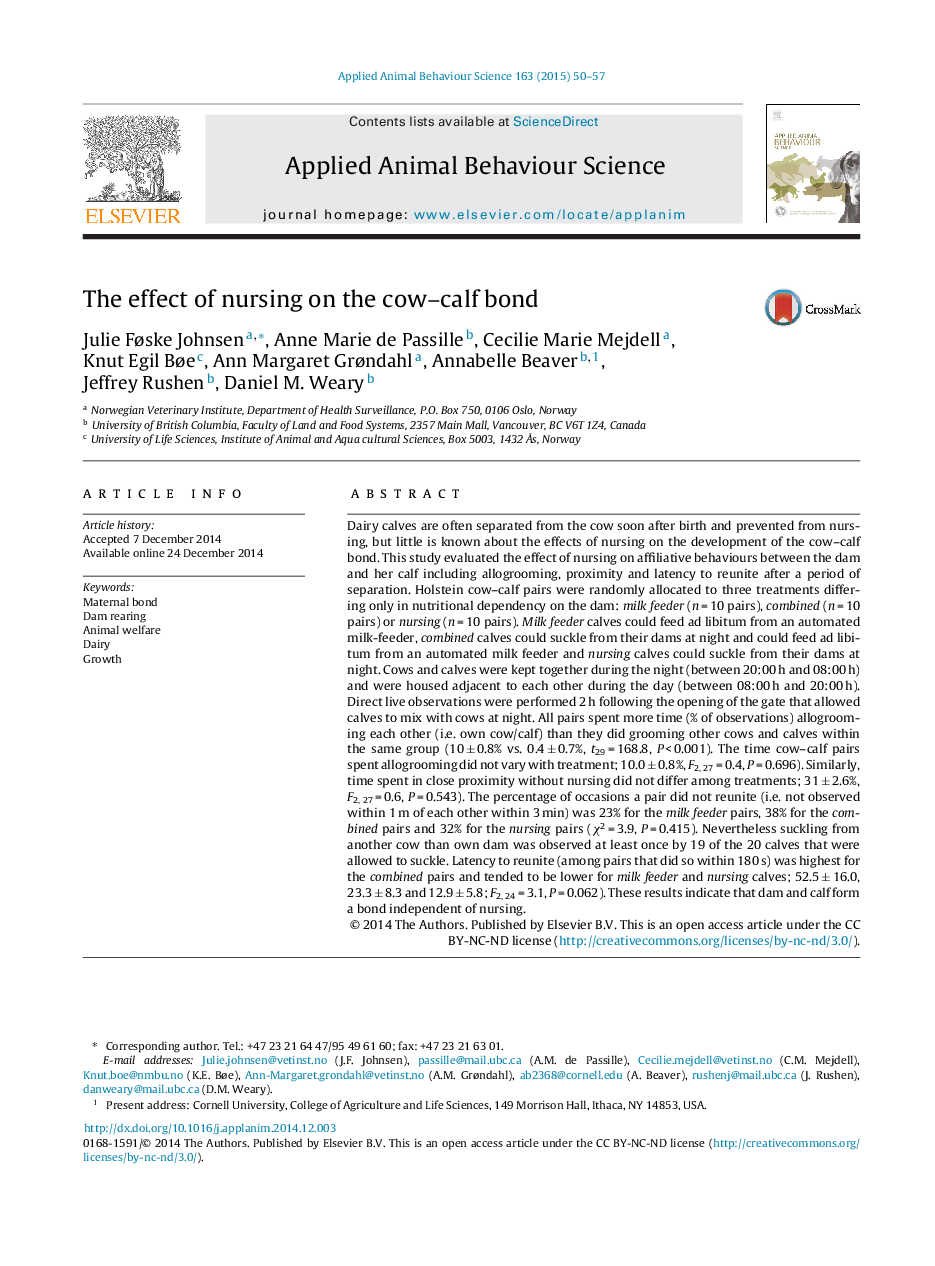| Article ID | Journal | Published Year | Pages | File Type |
|---|---|---|---|---|
| 6379613 | Applied Animal Behaviour Science | 2015 | 8 Pages |
â¢The dairy cow and calf are mostly separated shortly after birth, and detailed knowledge about the maternal bond is lacking.â¢We examined how nursing affected affiliative behaviours between a dairy cow and her young.â¢We show that the dam and calf express behaviour suggestive of a strong bond even in the absence of nursing.
Dairy calves are often separated from the cow soon after birth and prevented from nursing, but little is known about the effects of nursing on the development of the cow-calf bond. This study evaluated the effect of nursing on affiliative behaviours between the dam and her calf including allogrooming, proximity and latency to reunite after a period of separation. Holstein cow-calf pairs were randomly allocated to three treatments differing only in nutritional dependency on the dam: milk feeder (n = 10 pairs), combined (n = 10 pairs) or nursing (n = 10 pairs). Milk feeder calves could feed ad libitum from an automated milk-feeder, combined calves could suckle from their dams at night and could feed ad libitum from an automated milk feeder and nursing calves could suckle from their dams at night. Cows and calves were kept together during the night (between 20:00 h and 08:00 h) and were housed adjacent to each other during the day (between 08:00 h and 20:00 h). Direct live observations were performed 2 h following the opening of the gate that allowed calves to mix with cows at night. All pairs spent more time (% of observations) allogrooming each other (i.e. own cow/calf) than they did grooming other cows and calves within the same group (10 ± 0.8% vs. 0.4 ± 0.7%, t29 = 168.8, P < 0.001). The time cow-calf pairs spent allogrooming did not vary with treatment; 10.0 ± 0.8%, F2, 27 = 0.4, P = 0.696). Similarly, time spent in close proximity without nursing did not differ among treatments; 31 ± 2.6%, F2, 27 = 0.6, P = 0.543). The percentage of occasions a pair did not reunite (i.e. not observed within 1 m of each other within 3 min) was 23% for the milk feeder pairs, 38% for the combined pairs and 32% for the nursing pairs (Ï2 = 3.9, P = 0.415). Nevertheless suckling from another cow than own dam was observed at least once by 19 of the 20 calves that were allowed to suckle. Latency to reunite (among pairs that did so within 180 s) was highest for the combined pairs and tended to be lower for milk feeder and nursing calves; 52.5 ± 16.0, 23.3 ± 8.3 and 12.9 ± 5.8; F2, 24 = 3.1, P = 0.062). These results indicate that dam and calf form a bond independent of nursing.
Graphical abstractDownload high-res image (66KB)Download full-size image
